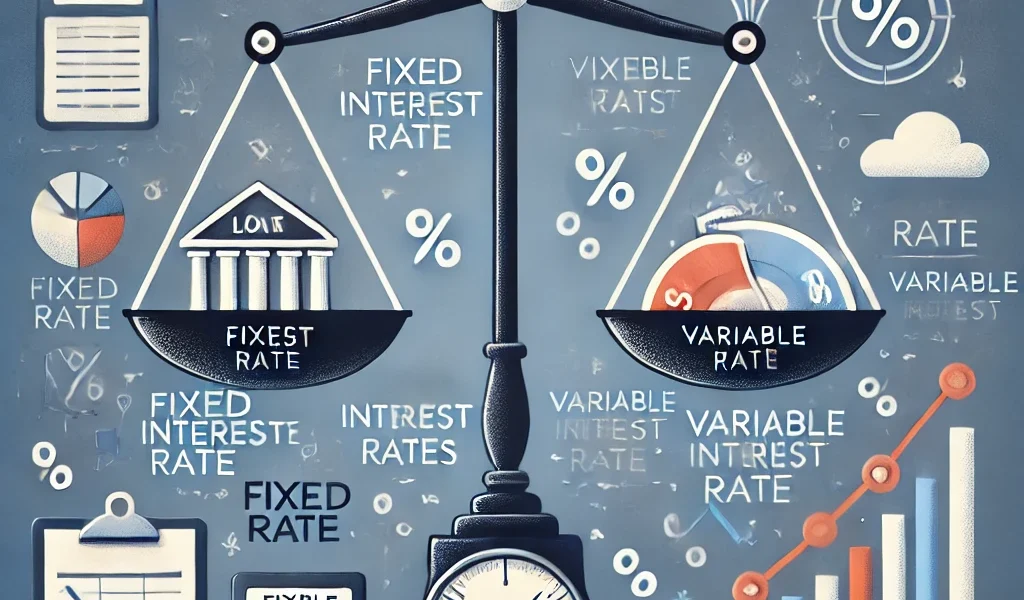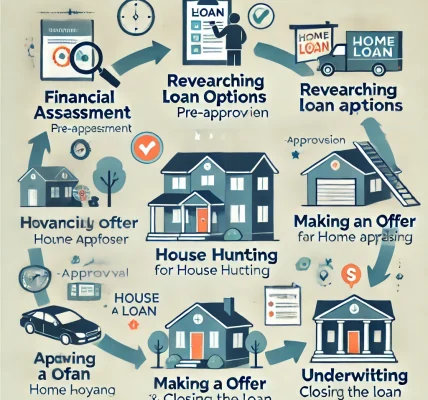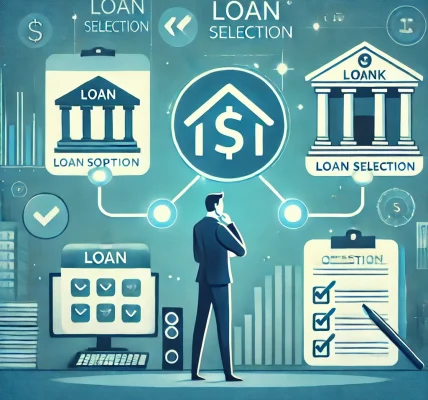Introduction
When taking out a loan, one of the most critical factors to consider is the interest rate structure. Interest rates determine the cost of borrowing and significantly impact your financial commitments. Borrowers usually face a choice between fixed interest rates and variable interest rates. Each type has its advantages and disadvantages, and understanding them can help you make an informed decision that suits your financial goals.
This article explores the differences between fixed and variable interest rates, how they work, and which option might be best for you.
What Is an Interest Rate?
An interest rate is the percentage charged by a lender on the principal amount of a loan. It represents the cost of borrowing money and is expressed as an annual percentage rate (APR). The interest rate can either be fixed (remains constant) or variable (fluctuates over time). Choosing the right type of interest rate depends on several factors, including market conditions, loan tenure, and personal financial stability.
Fixed Interest Rate Loans
A fixed interest rate remains unchanged throughout the loan tenure. This means that the borrower pays the same interest rate and equal monthly installments (EMIs) for the entire loan duration.
Advantages of Fixed Interest Rates:
- Predictability: Since the interest rate remains constant, borrowers can plan their finances better.
- Stability: No impact from market fluctuations ensures consistent payments.
- Easier Budgeting: Fixed EMIs help in long-term financial planning.
Disadvantages of Fixed Interest Rates:
- Higher Initial Rates: Fixed-rate loans generally have higher interest rates than variable-rate loans at the beginning.
- Limited Benefit from Rate Cuts: Borrowers cannot take advantage of falling interest rates in the market.
- Potentially Higher Long-Term Cost: If interest rates drop significantly, you may end up paying more than necessary.
Best Suited For:
- Individuals who prefer financial certainty and predictability.
- Borrowers who plan to hold the loan for an extended period.
- Those expecting interest rates to rise in the future.
Variable Interest Rate Loans
A variable interest rate, also known as a floating interest rate, fluctuates based on changes in market interest rates. It is usually tied to a benchmark rate set by financial institutions or central banks, such as the Repo Rate or LIBOR (London Interbank Offered Rate).
Advantages of Variable Interest Rates:
- Lower Initial Rates: Often lower than fixed interest rates at the start.
- Potential Savings: If market interest rates decrease, borrowers can benefit from lower EMIs.
- Flexibility: Suitable for short-term loans where rate changes are less impactful.
Disadvantages of Variable Interest Rates:
- Uncertainty: Loan repayments can fluctuate, making budgeting difficult.
- Risk of Rate Hikes: If interest rates increase, EMIs will rise, leading to higher loan costs.
- Potential Financial Strain: Unpredictable changes may disrupt financial planning.
Best Suited For:
- Borrowers willing to take risks and take advantage of declining rates.
- Individuals who plan to repay loans quickly before potential rate increases.
- Those who expect interest rates to fall in the future.
Key Differences Between Fixed and Variable Interest Rates
| Feature | Fixed Interest Rate | Variable Interest Rate |
|---|---|---|
| Rate Stability | Remains the same | Fluctuates with market rates |
| EMI Amount | Fixed throughout loan tenure | Changes with interest rate movement |
| Initial Rate | Typically higher | Lower than fixed rate initially |
| Flexibility | Less flexible | More flexible, adjusts to market conditions |
| Risk Factor | Low-risk, stable | Higher risk due to market fluctuations |
| Best For | Long-term borrowers seeking stability | Short-term borrowers or those expecting rate drops |
How to Choose the Right Interest Rate Type
Selecting between fixed and variable interest rates depends on various factors:
- Loan Tenure:
- If you’re taking a short-term loan (e.g., 1-5 years), a variable interest rate might be beneficial.
- For long-term loans (e.g., 15-30 years), a fixed rate may provide better stability.
- Market Trends:
- If interest rates are historically low, fixing your rate can lock in favorable terms.
- If rates are expected to decrease, a variable rate could save money.
- Financial Stability:
- If you prefer predictable payments, choose a fixed rate.
- If you can handle financial fluctuations, a variable rate might work.
- Risk Tolerance:
- Low-risk borrowers should opt for fixed rates.
- Those comfortable with some level of risk can consider variable rates.
Hybrid Interest Rate Loans: A Middle Ground
Some lenders offer hybrid loans that combine elements of both fixed and variable rates. Typically, the loan starts with a fixed interest rate for a certain period and then shifts to a variable rate. This option allows borrowers to benefit from initial stability while taking advantage of potential rate decreases in the future.
Conclusion
Understanding the difference between fixed and variable interest rates is crucial when securing a loan. While fixed rates provide stability and predictable payments, variable rates offer flexibility and potential cost savings. Your choice should align with your financial situation, loan tenure, and market conditions.
Before finalizing a loan, compare lender offerings, analyze market trends, and assess your financial comfort level. By making an informed decision, you can optimize your loan experience and minimize financial risks.




